Even though there are four main production techniques, potters sometimes chose to make canteens in more unusual forms, as illustrated here.
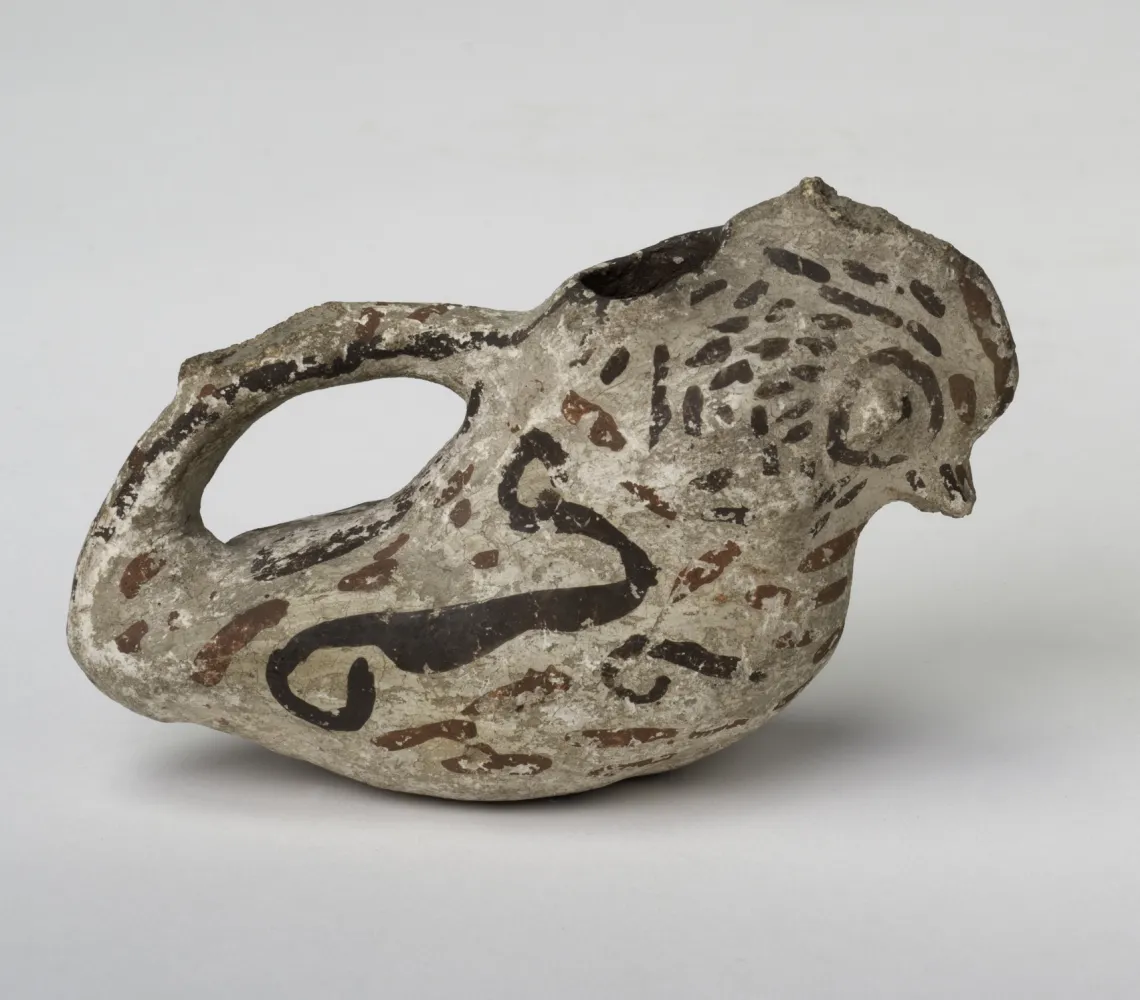
Zuni bird-shaped polychrome canteen, ca. 1915, Zuni, NM. Unknown artist. Gift of Leal Edmonds, 1980. Max. length: 4.5 in. (11.4 cm.). (Catalog No. 1980-45-6)
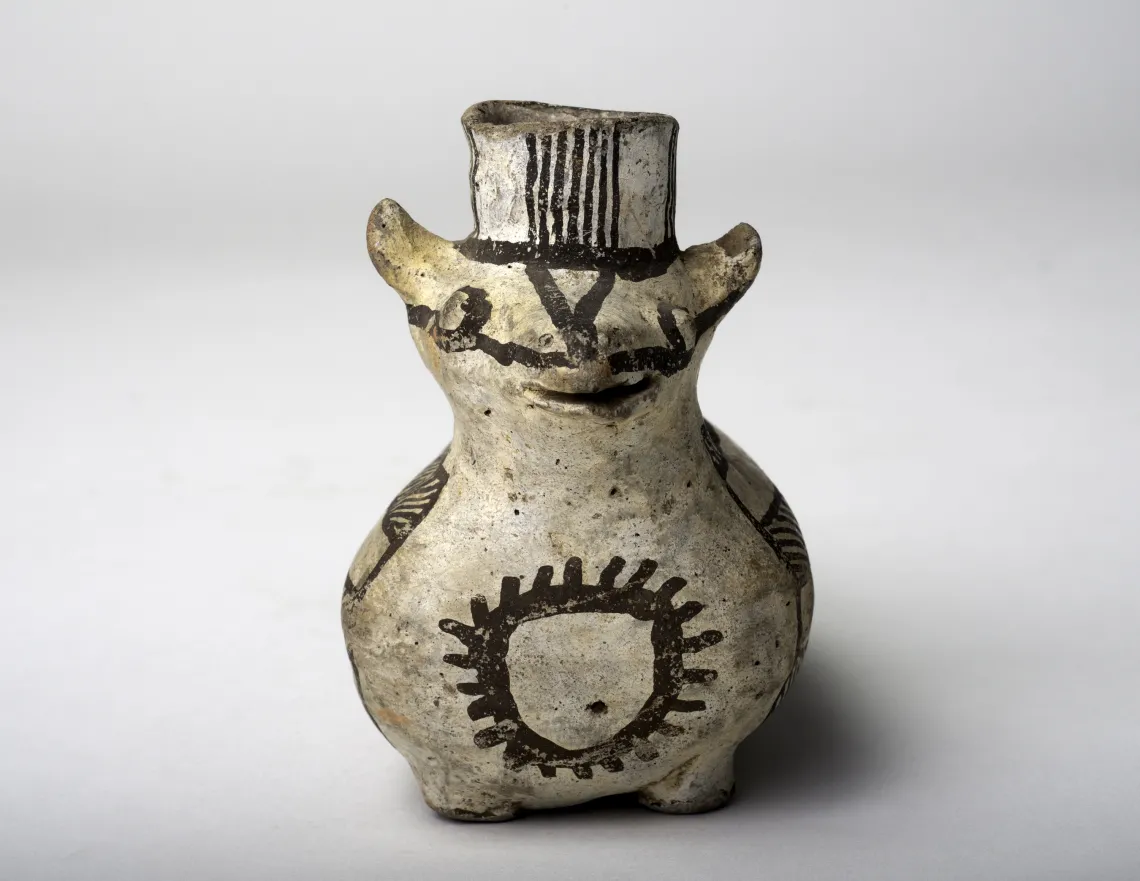
Chaco Black-on-white animal effigy canteen, ca. 1075-1150 CE, Bonito Creek, AZ. Ancestral Pueblo culture. Purchased 1928. Max. length: 5.6 in. (14.2 cm.). (Catalog No. GP-6255)
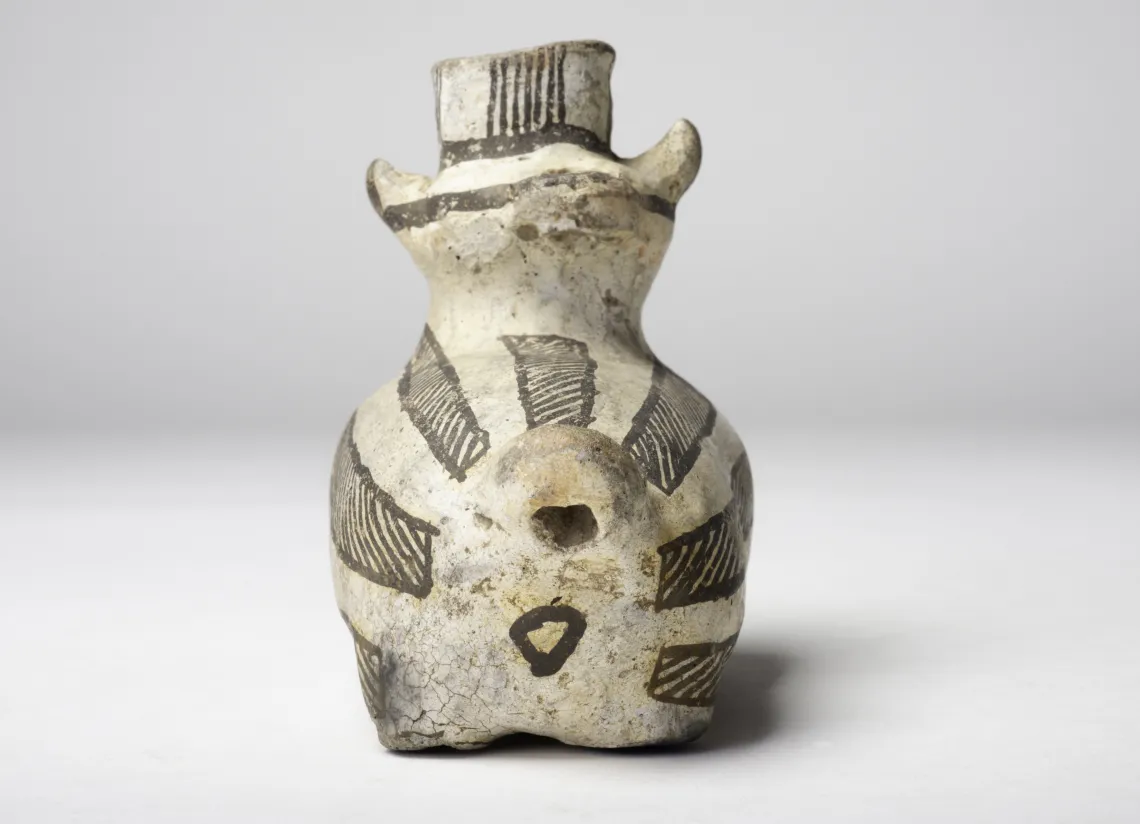
Rear view of GP-6255.
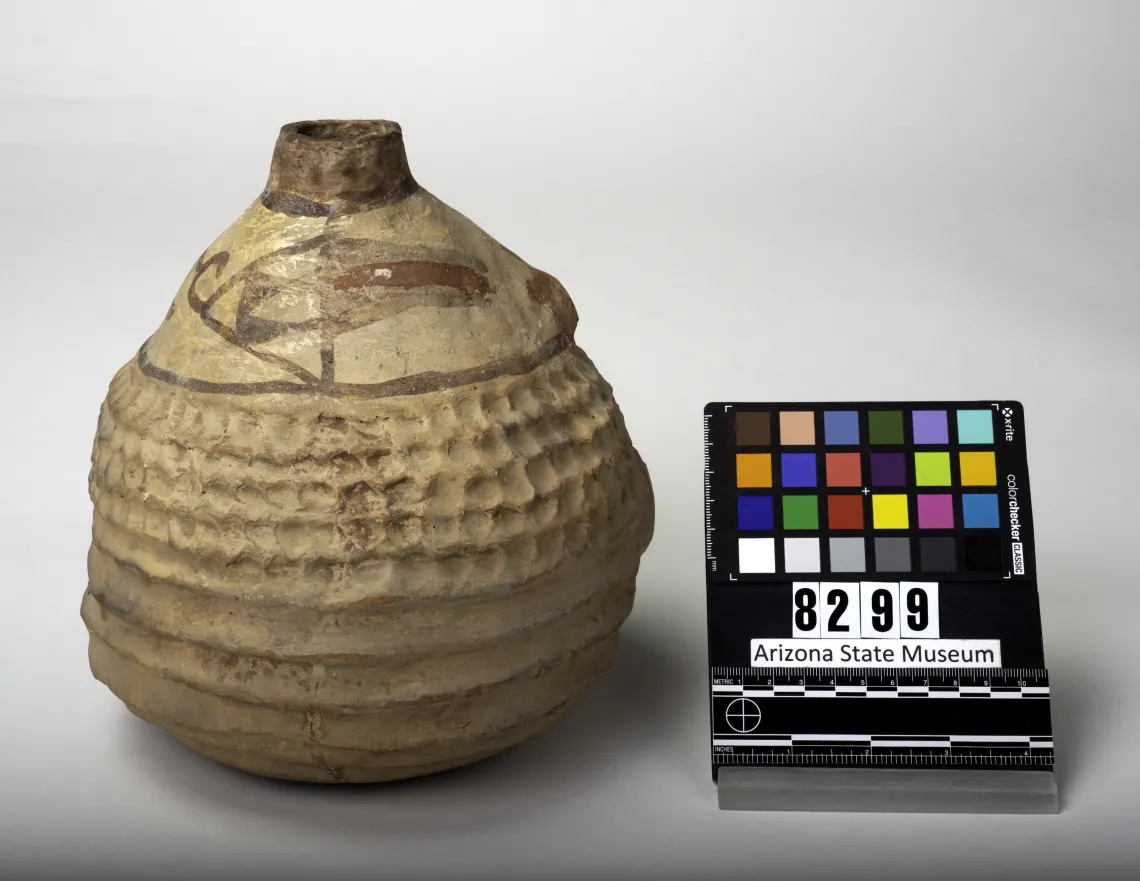
Hopi polychrome canteen, ca. 1860, Hopi Mesas, AZ. Unknown artist. Nelle Dermont Collection, ASM purchase 1920. Max. length: 8.0 in. (20.3 cm.). (Catalog No. 8299)
This eccentric jar-shaped canteen has a corrugated texture, an ancient southwestern pottery technique. This may have been part of an orchestrated effort to revive older styles or simply one potter’s interest in exploring the traditions of past.
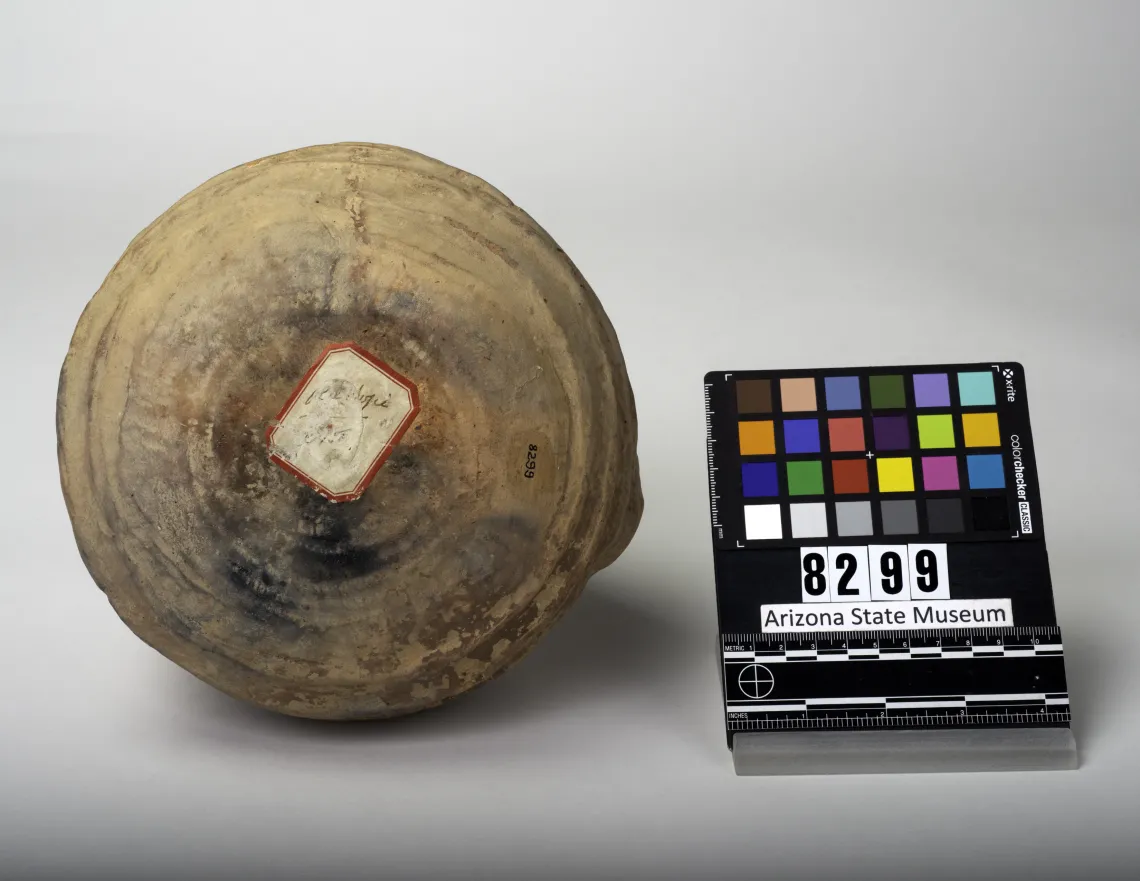
Bottom view of 8299.
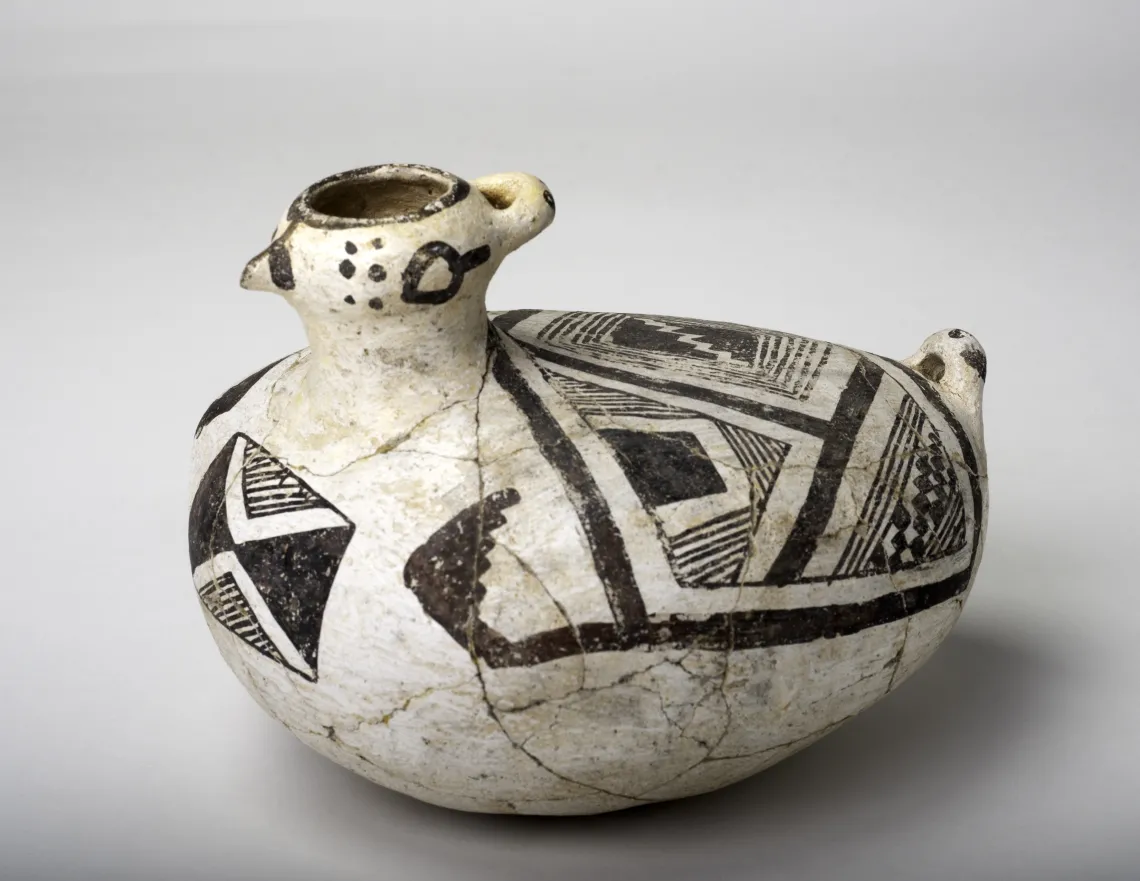
Pinedale Black-on-white bird effigy canteen, ca. 1270—1320 CE. Mogollon culture. Gift of Henry Wallace. Max. length: 6.0 in. (15.3 cm). (Catalog No. 2007-496-7)
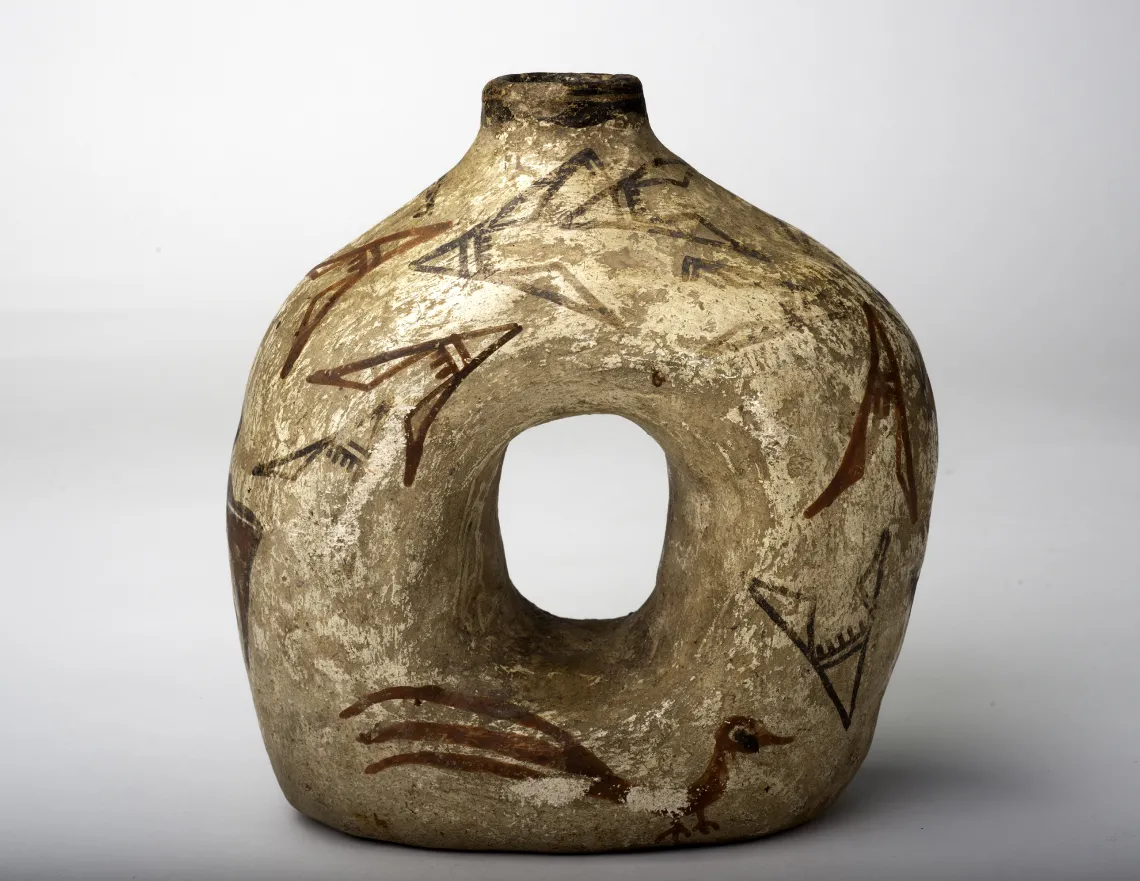
Zuni Black-on-white canteen, ca. 1880, Zuni, NM. Unknown artist. Gift of Lionel F. Brady, 1943. Max. length: 7.7 in. (19.5 cm.). (Catalog No. E-1790)
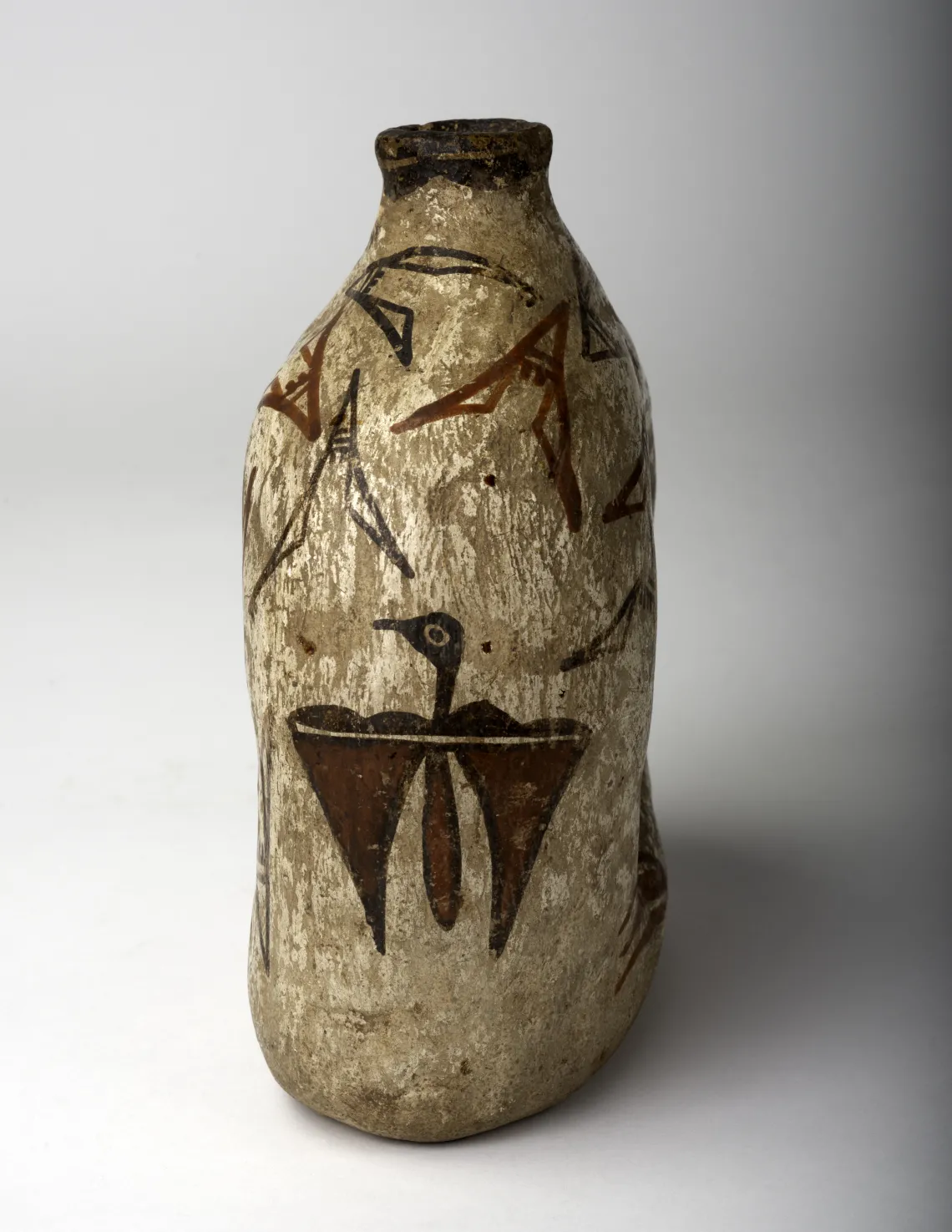
Side view of E-1790.
Canteens in Glass
The Arizona State Museum is committed to documenting new developments in Native arts, and when possible, acquiring works for the permanent collections to represent such trends.
A case in point are examples of glass canteens by two acclaimed Southwest Native glass artists*. Both have embraced the challenges of this medium, experimenting with a variety of techniques to create works that express their cultural values and at the same time showcase the skills they have mastered.
*For those interested in learning more about Native American glass art, see Clearly Indigenous: Native Visions Reimagined in Glass (Chambers, Letitia, and Cathy Short. Santa Fe: Museum of New Mexico Press, 2000), a catalog produced for a traveling exhibit by the same name.

Etched glass canteen, c. 2000. Ramson Lomatewama, Hopi. Third Mesa, AZ. Height: 28 cm; width: 21.8 cm ; depth : 10.5 cm. Gift of Jerry Freund, 2025. (Catalog No. 2025-259-1)
Hopi artist Ramson Lomatewama is known for his katsina dolls, silver jewelry, poetry, and other creative pursuits. He added glass to his artistic toolkit after attending a workshop at the Corning Museum of Glass in New York, and honed his skills during residencies at Pilchuck, the glass school in Washington State founded in 1971 by Dale Chihuly.
Lomatewama provided this background about this canteen:
This is an early piece. I’m almost certain this was made during my second Artist in Residence at Pilchuck Glass School. This is the first and possibly the only clear sandblast outside of Seattle, WA, ed “canteen” shape that I’ve done.
The canteen has one lug to show that there are aspects of life that are there, but not visible to us. The images depict various aspects of Hopi beliefs and values. Central are the importance of clouds, lightning, and rain. Underneath is a stylized corn plant (symbolizing plant and human life). The horizontal line on which it rests is the earth. The pairs of short vertical lines below that are the future generations. On either side of the corn plant are my personal idea of complimentary opposites on which the balance of life is maintained. Finally, they are enclosed by the circle, which to me is the totality of all that exists eternal. --Ramson Lomatewama, email communication to Diane Dittemore, January 11, 2024.

Glass canteen with cork and leather strap, c. 2025. Ira Lujan, Taos/Ohkay Owingeh Pueblo. Museum purchase, 2025. Height: 14 cm; width: 11.55 cm; depth: 5cm. (Catalog No. 2025-282-1)
Ira Lujan apprenticed under pioneer Southwest glass artist Tona Jojola (Isleta Pueblo) in the year 2000. He later studied with Preston Singletary (Tlingit) at the Pilchuck Glass School in Washington state.
I was fascinated by the movement of hot glass, the way it captures light, and the potential of creating Native Art with this exciting new medium. I shape and sculpt glass using the ancient techniques passed down from Italian glass blowers. Using these techniques, I then started to experiment with the hot molten glass using the designs from my Taos Pueblo culture. --Ira Lujan’s artist statement from Gallery Hózhó in Albuquerque, NM, where canteen was purchased.





